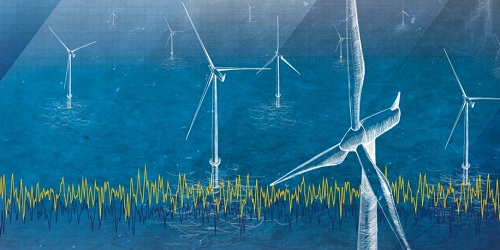Most Popular
-
TRF strategies: Using Peak Reliability to increase Availability
Power is one of the most critical components of infrastructure crucial for the economic growth and w.. -
Artificial Inteligence in Power System
A persistent and reliable supply of power is vital for the working of today's modern and advanced so.. -
Power Distribution planning for Smart Grid Applications
The modernization of electricity transmission and distribution system so as to maintain a reliable a.. -
Motor Current Signature Analysis (MCSA): A Powerful Tool for Predictive Maintenance in Power Industry
- How MCSA helps prevent costly breakdowns and downtime. - The benefits of online testing (no produ..
MANAGING RENEWABLE ENERGY RESOURCES WITH AI SUPPORT
Natural concerns and shortage of assets are persistently pushing interest for sustainable power source. Be that as it may, the best confinement in their development is the irregular way of source i.e. they rely on climate conditions and subsequently not at all like conventional sources can't coordinate surges in demand. A Demand side approach is being produced to unravel such emergency, one part of which includes diminishing consumer use at short notice. The other part includes asking clients who claim hardware that can store energy to help adjust surges . This stockpiling is a contrasting option to spending on huge scale batteries, and guarantees to be a great deal more efficient in the event that it can be made to chip away at a huge scale.
Implementing such a project on large scale would involve complications like understanding consumer requirements, providing differential tariffs, as well as estimating to what extent consumer devices will be available and at what cost. Factoring all above requirements to minimize grid disruption and incentivize customers ,into calculations is a highly complex process.There can likewise be undesired impacts, for example, expansive synchronous bounce back in utilization. At last there's a potential significant security issue: a focal framework that gathers information about vitality utilization from numerous gadgets might be inclined to pernicious assaults and data altering. This could undermine both lattice adjusting and monitoring what clients are owed.
ROLE OF AI
Developing Artificial Intelligent algorithms can be used to give responses to these difficulties. By utilize modern machine-learning calculation, displaying the conduct of individual gadgets and battery stockpiling units by looking into information from savvy meters and sensors, can be done by matrix administrators. Once agreed to accept framework stockpiling, it ought to be conceivable to gauge the helpful lifetime of a battery pack or unit by applying prognostic calculations to its charging/releasing information. Proprietors will then get fitting pay, in addition to the additional motivating force of knowing to what extent their battery will last. With regards to overseeing gadgets in the pool, utilize singular savvy meters or control gadgets to encourage a focal server in the cloud was considered as a technique. However, meters are costly and short reaction times require the cloud server to investigations information in milliseconds, that looks unfeasible once a large number of units are in a pool.
An option is to have metering gadgets that recognize request levels on the framework themselves and lessen control in like manner. These take weight off the focal server and it just requires metering at site level, instead of for each electrical gadget. By and by, the last complexity of planning all these individual choice is still in human hands.
A good illustration is an early entrant in this field, Swiss-German firm Alpiq, which in 2014 launched an intelligent system called GridSense which aims to imperceptibly steer domestic or commercial energy consumption of the equipment into which it is integrated (such as boilers, heat pumps, charging stations for electric vehicles) based on measurements such as grid load, weather forecasts and electricity charges. So far Alpiq appear only to have filed one patent application, in the field of electric vehicles, but of a breadth likely to affect many other businesses thinking of energy management. It claims a method for programming energy flow in an accumulator of an electric vehicle, by recording information on past usages of the accumulator locally at a point of connection to a grid; locally estimating future usage of the accumulator, taking in input the information on past usages; and locally programming the energy flow between the grid and the accumulator, which may be in either direction, on the basis of the estimated information. Instead of always charging the accumulator up to 100%, the invention attempts to estimate (based on the charging operations history) how much power is effectively needed for the vehicle’s next outing, using machine learning and data mining techniques. Alpiq claim that this may lead to improved performance as the charger will not attempt to charge the accumulator up to 100% when just a small amount of energy is needed for the next trip.
Alpiq are unlikely to be the only ones looking to patent AI techniques for managing future electricity flows. This is going to be an exciting area for energy suppliers, users and traders for some time to come.
A quarter century now, the capacity of a subjective framework, for example, a NLG stage, to go about as the master will mean even complex frameworks will end up noticeably self-ruling. We'll see arranges consequently foreseeing issues, issuing work orders, requesting parts, and educating clients with human knowledge, however maybe not human mediation. Brilliant systems won't just comprehend what's happening, yet will impart that learning in plain dialect. As we look toward the eventual fate of NLG in the utilities business, we can hope to see primary concern edge upgrades as genuine and quantifiable uptime additions are accomplished.
